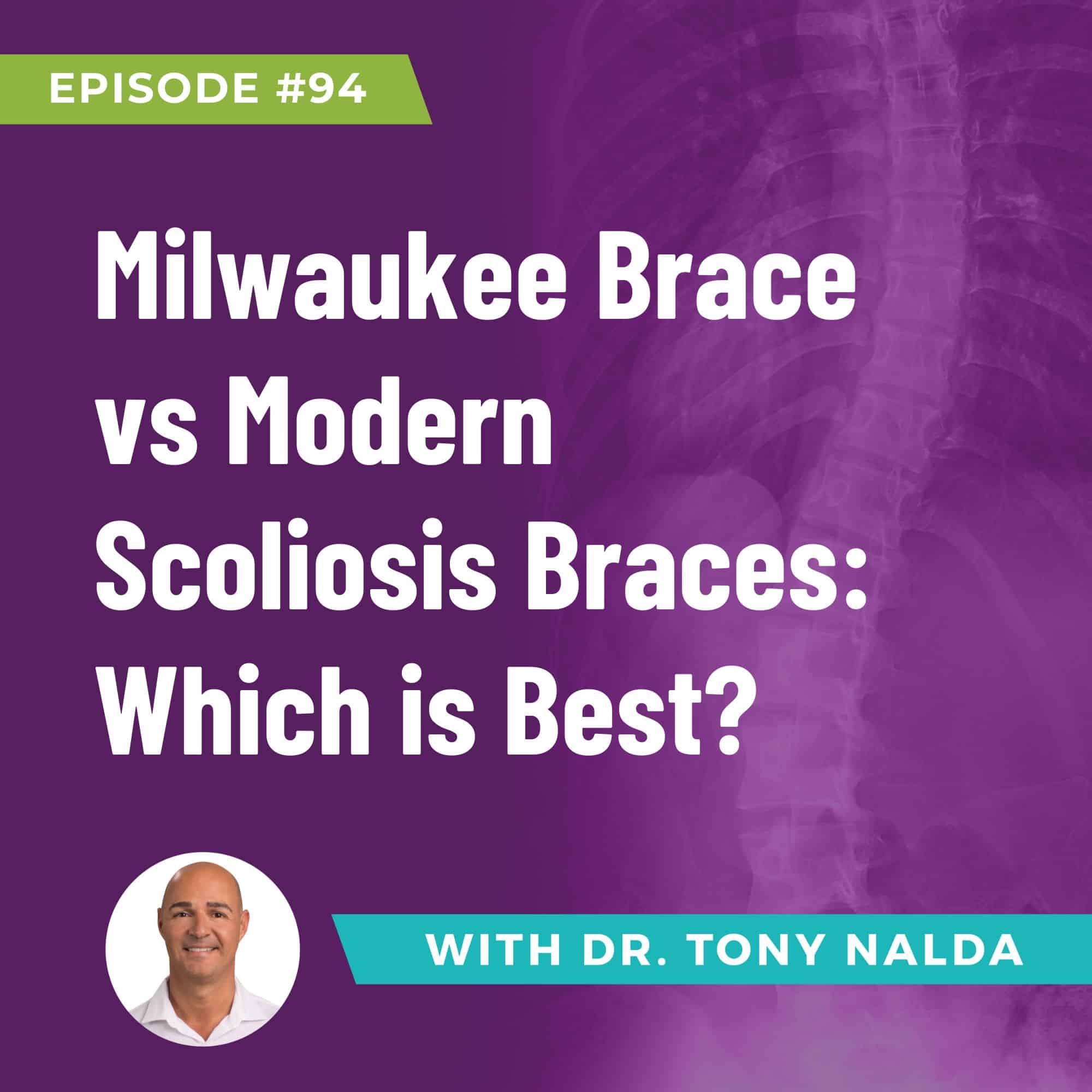Episode 94: Milwaukee Brace vs Modern Scoliosis Braces: Which is Best?
When it comes to managing scoliosis, one common concern that arises during patient consultations is the choice of bracing. Dr. Tony Nalda’s podcast emphasizes the importance of understanding the two main types of scoliosis treatment approaches – traditional and conservative.
Traditional vs Conservative Treatment
Traditional methods aim to slow down scoliosis progression, often leading towards spinal fusion surgery. On the other hand, conservative approaches, such as chiropractic-centered treatments, are more proactive, focusing on reducing curves to prevent severe outcomes.
The Milwaukee Brace was once commonly used and has somewhat faded in prevalence in the United States. This brace, extending from the cervical spine to the pelvic area, was designed to elongate the spine for decompression. However, it comes with challenges – it's bulky, uncomfortable, and not easily tolerated. Importantly, its effectiveness is confined to a specific group – adolescents in rapid growth with scoliotic curves ranging between 25 and 40 degrees. Once growth halts or the curve exceeds 40 degrees, the Milwaukee Brace is no longer recommended, as it doesn't actively work to reduce the curvature but rather slows down its progression.
In contrast to traditional braces, modern corrective braces, such as the Scully brace, take a patient-centric approach. The primary objective is not only to prevent further progression but also to actively reduce the structural curvature. The three-dimensional components of scoliosis that these braces address – rotation, push, and elongation. Unlike the Milwaukee Brace, corrective braces are more adaptable, striving to make the curve smaller at a structural level, ultimately improving your condition.
In the ongoing dialogue of Milwaukee Brace vs Modern Scoliosis Braces, the decision rests on various factors unique to your situation – age, degree of curvature, and growth phase. While traditional braces may have their place in specific scenarios, the modern, corrective approach offers a more intimate and effective solution for managing scoliosis. Consultation with a healthcare professional becomes a pivotal step, ensuring that your chosen brace not only slows down progression but actively contributes to the improvement of your condition.
For a deeper dive into scoliosis insights, tune in to Dr. Tony Nalda’s podcast.
Artlist.io 847544
Podcast: Play in new window | Download
Subscribe: RSS
Dr. Tony Nalda
DOCTOR OF CHIROPRACTIC
After receiving an undergraduate degree in psychology and his Doctorate of Chiropractic from Life University, Dr. Nalda settled in Celebration, Florida and proceeded to build one of Central Florida’s most successful chiropractic clinics.
His experience with patients suffering from scoliosis, and the confusion and frustration they faced, led him to seek a specialty in scoliosis care. In 2006 he completed his Intensive Care Certification from CLEAR Institute, a leading scoliosis educational and certification center.
About Dr. Tony Nalda
 Ready to explore scoliosis treatment? Contact Us Now
Ready to explore scoliosis treatment? Contact Us Now








